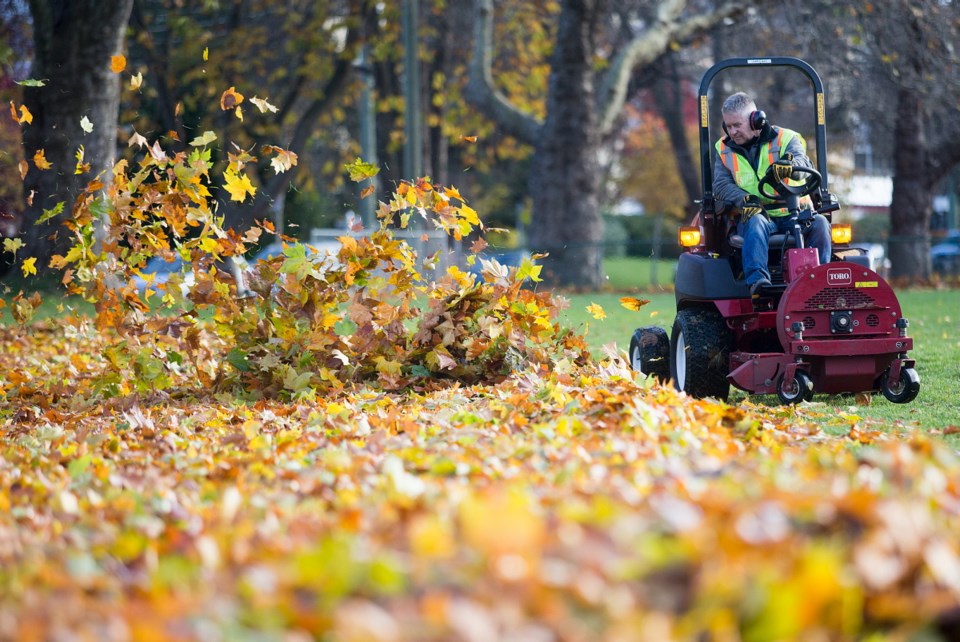Dead leaves on the ground, dead stems on trees and shrubs, dead plants where flowers and vegetables once strutted their stuff — how forlorn the yard can look this time of year. The urge is to tidy things up by blowing or raking leaves out of sight, pruning away unwanted branches and ripping dead plants out of the ground.
Garden cleanup has its virtues, but can do more harm than good if taken to excess.
Autumn leaves have their place
For instance, many gardeners like to clear dead leaves out from beneath shrubbery, where the leaves often come to rest after fall winds give them a few swirls around the yard. In fact, trees and shrubs would love to have their roots cosied in beneath a thick blanket of leaves.
Such a blanket keeps roots warmer in winter, cooler in summer and moister year-round. All of which spurs roots to grow more, and more root growth means more robust plants.
Many gardeners similarly wield leaf blowers and rakes to remove leaves that have drifted onto the lawn. But these leaves do no harm there, unless they blanket the ground so thickly that they exclude light.
A final pass with the mower might be all that is needed to grind leaves fine enough to filter down through the grassy blades to the soil.
A mulching mower, or a conventional mower fit with a mulching blade, does this job well.
The benefits of working the leaves into the lawn are similar to those of raking leaves beneath shrubbery. Next summer, your lawn will look nicer and be better able to survive periodic droughts.
What about pruning?
Let’s next take a look at all those dead and misplaced tree and shrub branches, many no longer hidden behind green leaves. Wouldn’t it be nice to prune these plants to look healthy, prim and pretty now?
Anytime you notice them is a good time to prune dead branches and, in most cases, diseased ones too.
Generally, though, don’t prune for beauty at this time of year. Fall pruning might stimulate a little cell activity at a time when plants should be shutting down in preparation for the cold.
And wounds left by fall pruning stay exposed all winter. So plants are more likely to be injured by cold weather, and pruning wounds are more likely to get infected if plants are pruned now than if pruned in late winter or early spring.
Don’t bother with wound dressings to avert infections; they’re generally useless.
If you can’t resist the urge to grab your pruning shears and beautify some trees and shrubs, work with plants that are very cold-hardy and subject to few diseases — ornamentals such as spirea, snowberry, sumacs and ninebark, and fruits such as gooseberries and currants.
Some cleanup is in order
The place to put most of your tidying energy is into your vegetable and flower beds. Old, infected plant parts left lying around can help spread diseases such as tomato leafspots, powdery mildew of zinnia, phlox and other plants, and peony botrytis.
For specific concerns such as these, it pays to thoroughly clean up at this time of year. In this case, ripping dead, old plants, stems or leaves out of the garden and then carting them away to the compost pile also carries away some potential pest problems.
Another reason to clean up vegetables and flowers now is to give you an earlier start next spring when the urge strikes you to plant.
But some restraint is needed, even where vegetables and flowers grew. A few plants left here and there will capture snow and hold it on the ground. Snow insulates the soil and even adds a bit of nitrogen for next year’s plants.
A few stalks left here and there also liven up the drab winter landscape.
Birds will flit about old sunflower heads looking for a few remaining seeds. And while seedheads of coneflower and teasel hardly get a second glance in summer, they begin to look mighty interesting come February.



